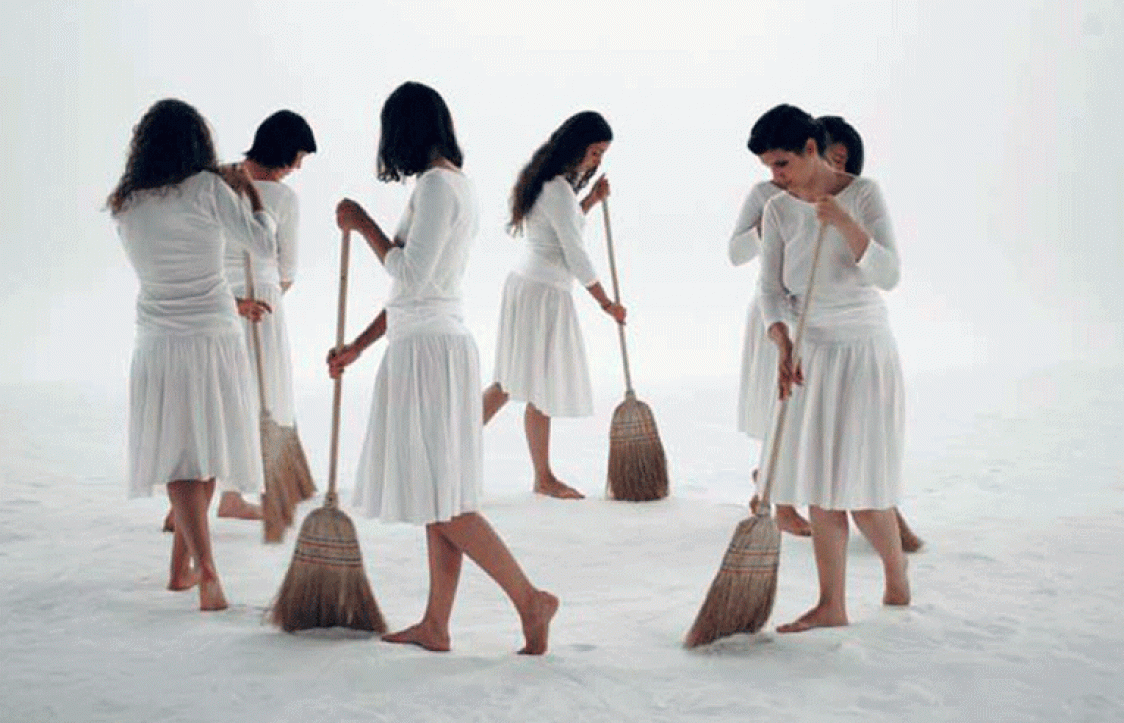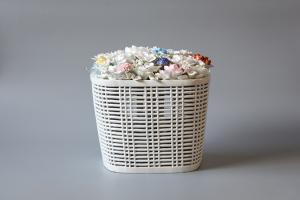MIRCEA CANTOR: MORE CHEEKS THAN SLAPS
Centre d'art contemporain d'Ivry - le Crédac
Till 18 December 2011
The end of transparency in art plays a great role in Mircea Cantor's work. Forming a mysterious body of work with many offshoots, Cantor's creations are a plea in favor of the "need for uncertainty," as the artist puts it. His art runs counter to the current overriding need to know and predict everything.
More Cheeks Than Slaps, the title Cantor has chosen for his current show and a direct reference to the Gospel injunction to "resist not evil: but whosoever shall smite thee on thy right cheek, turn to him the other also," is likewise the name of one of the works on view. The words, written out in reverse by the artist, are formally translated into neon lights and can be read thanks to their reflection in a mirror.
The elements making up this installation form a passage and link the gallery in which Rainbow (2011) is on display and a second room in which the exhibition continues with the screening of Tracking Happiness, a video from 2009 that features music by Adrian Gagiu. The film depicts in an almost mythic way a group of seven women. Like angels vested in white, they are shown first walking in a line, then forming a circle, treading barefoot on fine sand, a broom in hand. Each of the marks they leave in the sand is swept away by the woman following directly behind. A truly peaceful image, the scene repeats ad infinitum, like a mantra.
In the other gallery, Mircea Cantor gives voice to a completely different position with Fishing Fly (2011), a piece of sculpture measuring 400 x 350 x 146 cm that depicts a kind of airplane fashioned from recycled oil barrels. Fitted with a golden hook that hangs beneath its cabin, the aircraft recalls the esthetic of those toys made from tin cans in Asia and Africa. The object conjures up both a fighter plane and a fishing lure. Normally a symbol of speed, power and conflict, the craft is stranded here, posed off balance on a single wheel.
Since the very beginnings of his work, Mircea Cantor has tried to make himself understood in a language that can touch the broadest possible audience, "Today the essential thing is not to speak globally, playing on the multinational card, but to speak universally, which is the opposite of global. It's what globalization annihilates."
Perfectly anchored in its age, Mircea Cantor's work contains a subtle mix of the quest for happiness, utopian desire for a new age and an occasionally discourage realism. This is the case of I Decided Not to Save the World (2011), a video piece that runs barely a minute and features a small boy saying in an cheerful, angelic, straightforward way that he has decided not to save the world.
Exhibition curator : Claire Le Restif
Centre d'art contemporain d'Ivry - le Crédac
Member of Tram and DCA networks, Crédac enjoys the generous support of the City of Ivry-sur-Seine, the Regional Direction of Cultural Affairs of Île-de-France (the Ministry of Culture and Communications), the General Council of Val-de-Marne and the Regional Council of Île-de-France.
Centre d'art contemporain d'Ivry - le Crédac
La Manufacture des Œillets
25-29 rue Raspail
94200 Ivry-sur-Seine
France
+ 33 1 49 60 25 06
contact@credac.fr
www.credac.fr
Open every day (except Mondays), 2–6 pm
Weekends, 2–7 pm
Free admission
Image Credits: Mircea Cantor, "Tracking Happiness," 2009. Super 16mm transferred to HDCAM, 11'. Sound: Adrian Gagiu.* © 2009 Mircea Cantor. Courtesy Mircea Cantor and Yvon Lambert Paris.



